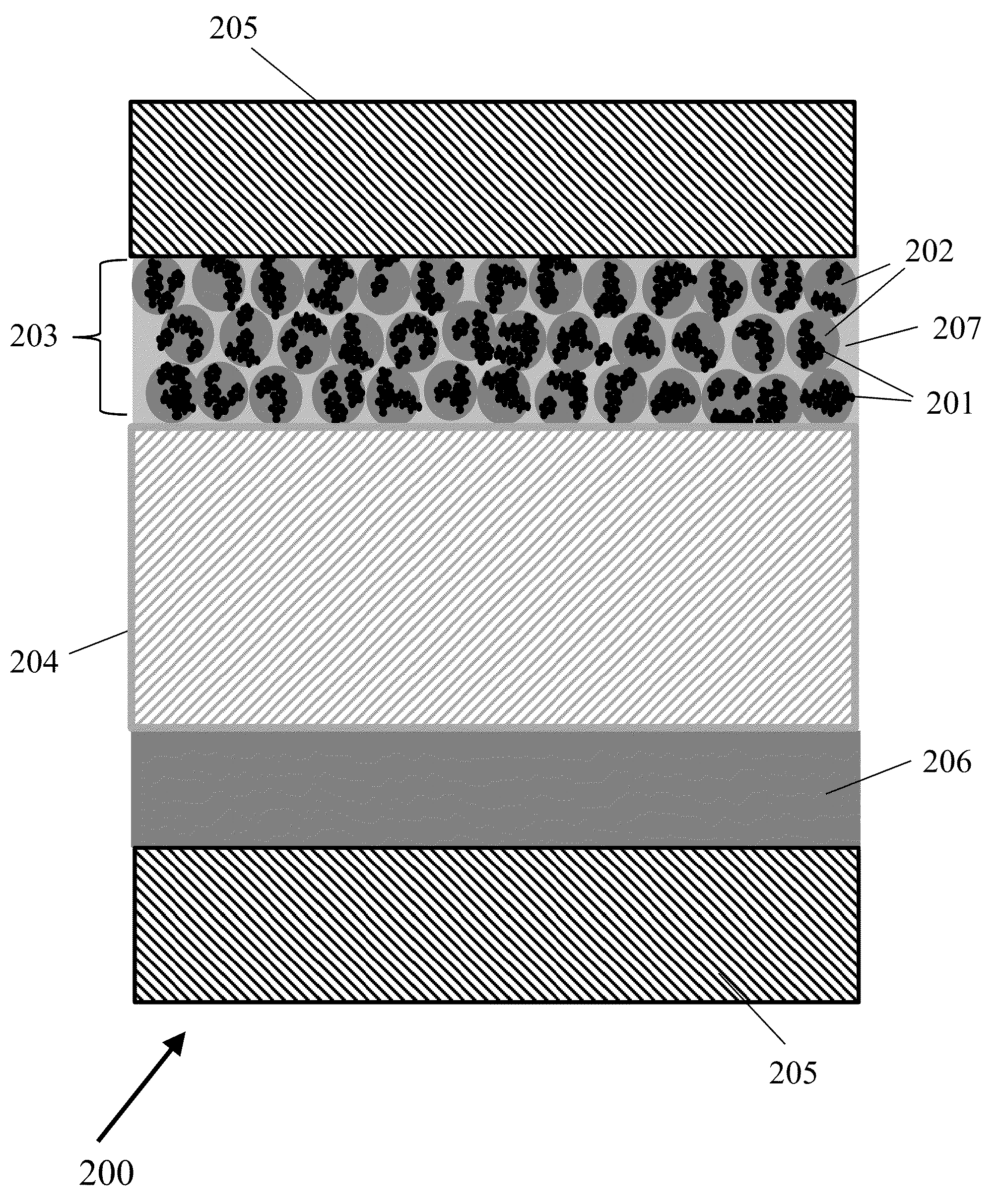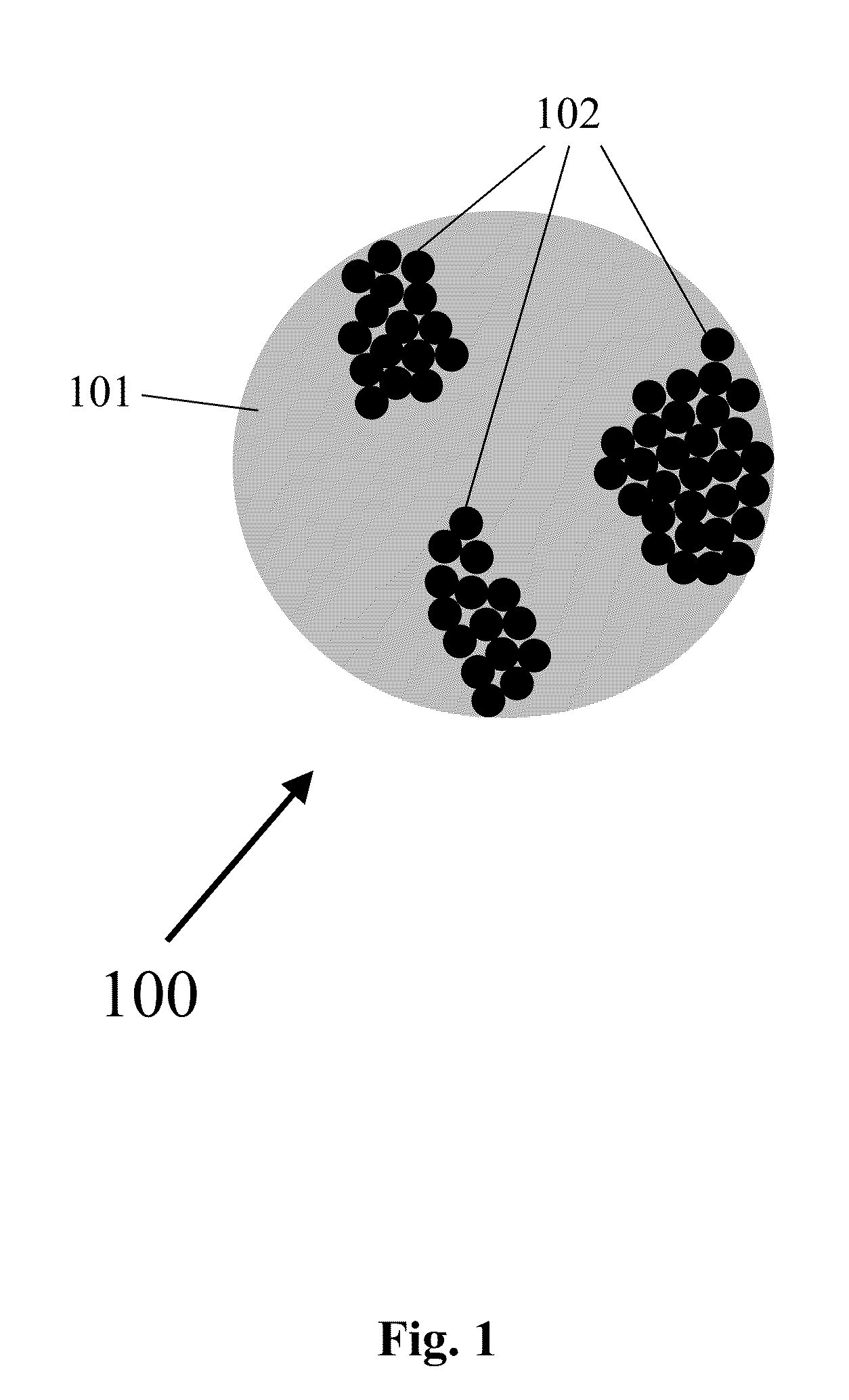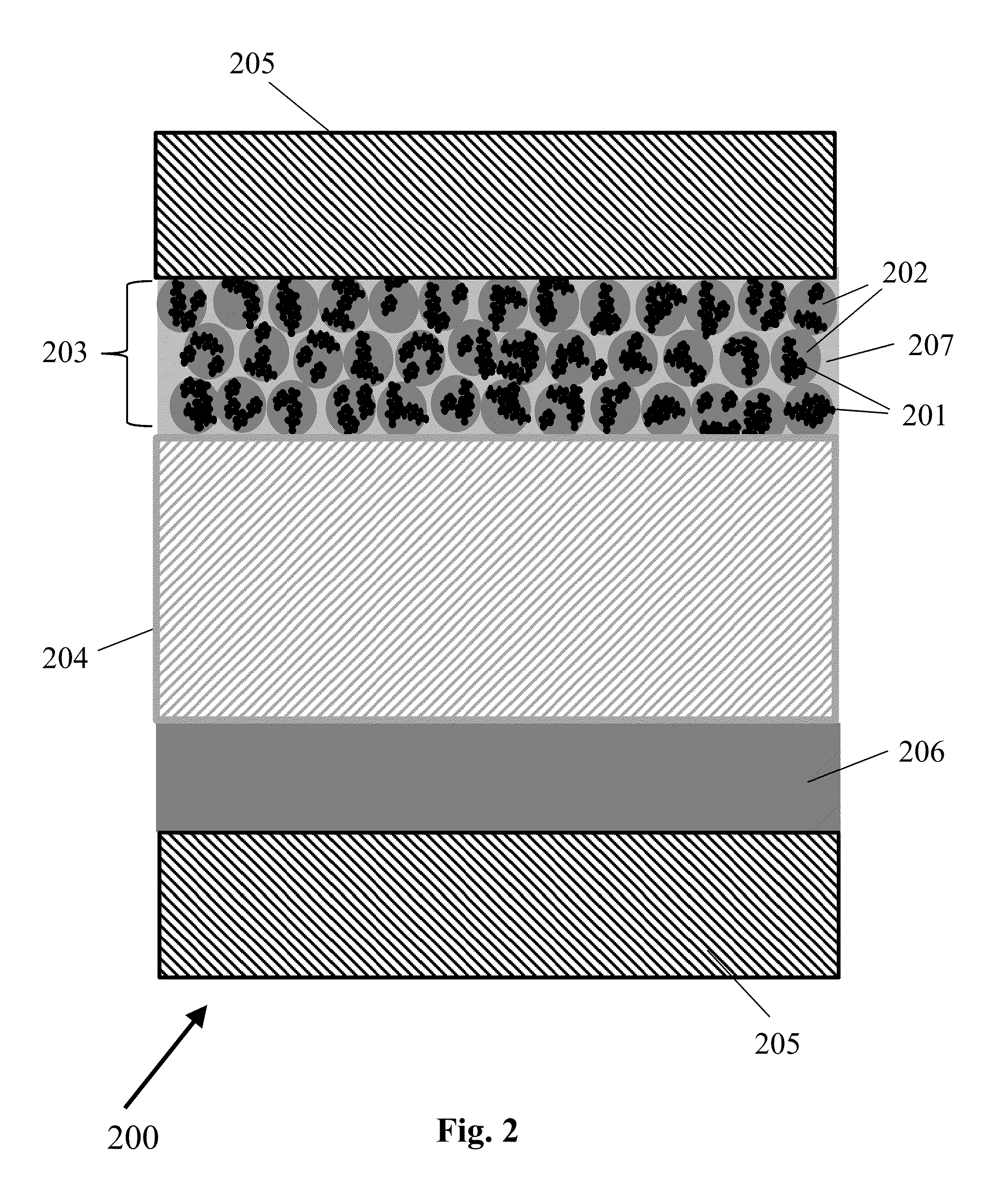Anode catalyst suitable for use in an electrolyzer
an anode catalyst and electrolyzer technology, applied in the field of anode catalysts, can solve the problems of low anode capacity, low efficiency of pem electrolyzer, and small fraction of current hydrogen production from pem electrolysis
- Summary
- Abstract
- Description
- Claims
- Application Information
AI Technical Summary
Benefits of technology
Problems solved by technology
Method used
Image
Examples
example 1
Uniform Dispersion of Catalyst Particles on Catalyst Support Particles
[0048]To create a uniform dispersion of iridium oxide catalyst particles on tungsten-doped titanium oxide support particles, first 2.57 g NaOH pellets were dissolved in 320 mL of warm ethylene glycol. Next, 1.00 g of tungsten-doped titanium nanoparticles (10-20 nm in diameter) were dispersed using 5 W of ultrasonication for 45 minutes. After ultrasonication, 1.18 g of iridium trichloride (1-2 nm in diameter) was then added to the reaction mixture, which was then heated to 175° C. for 3 hours under heavy stirring. The solution was then allowed to cool and poured into 2.0 L of deionized water. Nitric acid was added to the cooled reaction mixture until a pH of 1 was obtained. The reaction mixture was vacuum filtered, rinsed with water, and vacuum dried at 115° C. for 4 hours. The sample was then exposed to air at a temperature of less than 40° C. to form a surface oxide. The final product was approximately 36% iridiu...
example 2
Chain-Linked Catalyst Particles on Catalyst Support Particles
[0049]To create a chain-linked iridium oxide catalyst particles on tungsten-doped titanium oxide support particles, first 2.57 g NaOH pellets were dissolved in 320 mL of warm ethylene glycol. Next, 1.0 g of tungsten-doped titanium nanoparticles (10-20 nm in diameter) were dispersed using 5 W of ultrasonication for 45 minutes. Following ultrasonication, 2.3 g of iridium trichloride (1-2 nm in diameter) was then added to the reaction mixture over a mixing period of two hours. Once the mixing period was complete, the reaction mixture was then heated to 165° C. and slowly stirred for 3 hours. The reaction mixture was then cooled and poured into 2.0 L of deionized water. Nitric acid was added until a pH of 1 was obtained. The reaction mixture was vacuum filtered, rinsed with water, and vacuum dried at 115° C. for 4 hours. The sample was then exposed to air at a temperature of less than 40° C. to form a surface oxide. The final ...
example 3
The Performance of Uniformly-Dispersed Catalyst Particles vs. Chain-Linked Catalyst Particles on Catalyst Support Particles
[0050]The uniformly-dispersed catalyst particles (deposited on catalyst support particles) fabricated in Example 1 and the chain-linked catalyst particles (deposited on catalyst support particles) in Example 2 were then each used as the anode catalyst layer in separate PEM-based water electrolyzer cells. The two PEM-based electrolyzer cells were then polarized at a range of current densities from 0-2000 mA / cm2, and the voltage was measured at each current density. FIG. 5 shows the resulting polarization curves for the uniformly-dispersed particles (squares) and the chain-linked catalyst particles (triangles).
PUM
| Property | Measurement | Unit |
|---|---|---|
| Fraction | aaaaa | aaaaa |
| Fraction | aaaaa | aaaaa |
| Percent by mass | aaaaa | aaaaa |
Abstract
Description
Claims
Application Information
 Login to View More
Login to View More - R&D
- Intellectual Property
- Life Sciences
- Materials
- Tech Scout
- Unparalleled Data Quality
- Higher Quality Content
- 60% Fewer Hallucinations
Browse by: Latest US Patents, China's latest patents, Technical Efficacy Thesaurus, Application Domain, Technology Topic, Popular Technical Reports.
© 2025 PatSnap. All rights reserved.Legal|Privacy policy|Modern Slavery Act Transparency Statement|Sitemap|About US| Contact US: help@patsnap.com



